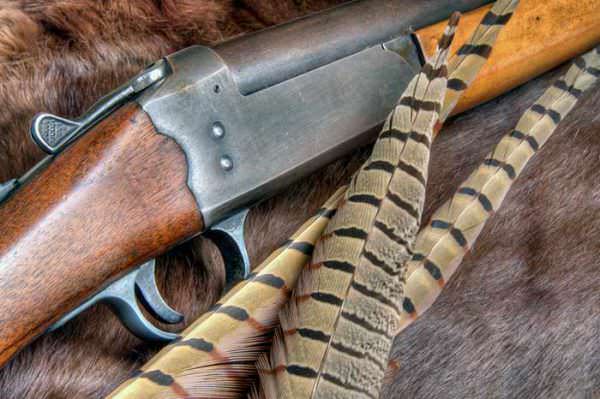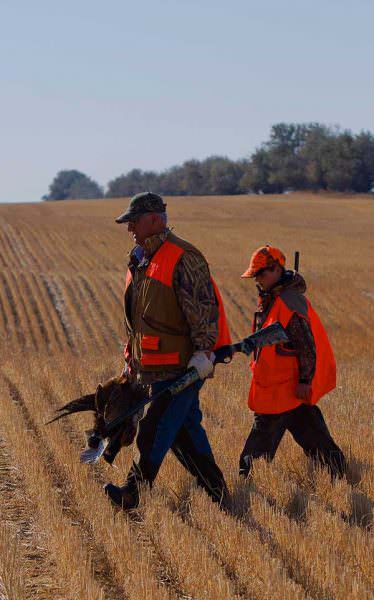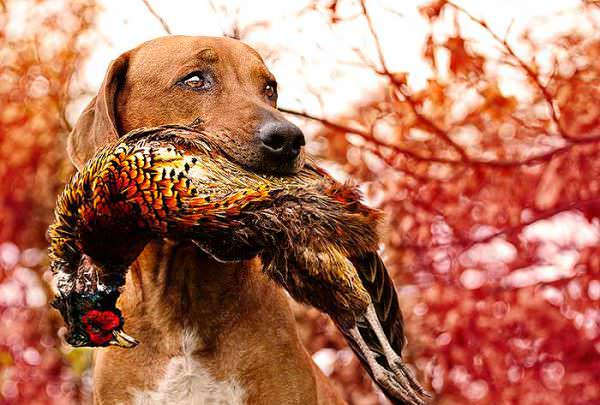by Rich Creason


USA -(AmmoLand.com)- Mom was born and raised in the tiny town of Kimball in the eastern side of South Dakota. Somehow, she landed with dad in Indiana where my brother and I were born.
Lucky for me, they took us back to visit her family every October, just in time for pheasant season.
My dad hunted for pheasant and rabbit. I was the dog flushing the bird or rabbit and fetching it after the shot. But, my mom was the one who taught me how to shoot.
Back then, in the late 50’s, she was one of few women hunters. Her gun was a Savage, Model 220, .410 single shot.
I don’t know how many pheasants were taken by her with this gun, but the limit was five birds per day, possession of 25 birds, and I think she always got her limit.

I was about ten when she began setting up cans for me to destroy with that shotgun. After a while, she began throwing them in the air and it didn’t take long before those cans too became torn pieces of metal. Graduation came when we were walking a fencerow and a rooster pheasant exploded from the cover. With one shot, the only shot I had, I dropped that bird. Mom had me hooked. A couple years later, she moved up (?) to a 20 gauge automatic. I became the proud owner of that Savage .410.
For the next 20 years or so, I dropped a lot of squirrels, a few rabbits, and almost every pheasant I shot at with that gun. Our daughter helped me clean those critters, asking about every different organ when I opened them up. “What’s that?” she asked. “What’s that?” I think those early lessons helped her through high school and college biology classes.
When it became her time, after safety practice and firing lessons with the famous Red Ryder BB gun and a Crosman air rifle, she too graduated to the single shot .410. On her first hunting trip, she dropped a squirrel dinner out of a tree and we took it home and cleaned it together.
My mom, me, and my daughter—three generations with that Savage.

Not many years ago, I took the Savage out of its case to once again go on a South Dakota pheasant hunt. With the obligations of a family and work, my hunting trips for small game had decreased significantly. (I hunted large game with a bow now.) At an outdoor writer’s conference in Sioux Falls, a group of writers were invited to a local farm to try their luck at downing some wild pheasants.
As we arrived at our location, the others began pulling expensive looking 12 gauge shotguns out of their vehicles. They laughed when I brought out my 50 plus year old Savage Model 220 .410.
“What are you doing with that?” they all asked.
I replied I was going to try to nail a pheasant or two. When we finished that hunt, I had my limit of three birds with three shots. They didn’t laugh any more.
Now, it’s almost time for our grandson to take his turn. He has been practicing with a BB gun in his Scout pack (also archery) and wants me to take him to Hunter Education classes soon. I still have my entire “Shoot Where You Look” kit from Leon Measures and will start him on that program. (If you have never heard of this, type in Shoot Where You Look in someone’s computer and read about it. Unbelievable!)
I decided to see if I could find out some history of both the .410 shotgun in general and my Savage in particular. First, the .410 appeared in the late 1800’s, but was used more for self defense than hunting. Next, the .410 is not a gauge, it is a bore. Gauge is determined by the weight of a lead ball which will fit into the barrel. A 1/12 pound ball equals the diameter of a 12 gauge and a 1/20 pound ball would fit the barrel of a 20 gauge.
Going by the barrel size of a .410, it would actually be a 68 gauge.
Naturally, because of the comparative size, the .410 bore shell holds less shot and powder than a larger gauge. This allows the gun to be lighter weight with less recoil than a larger size weapon. Ladies and young shooters often appreciate these features. Since the amount of pellets is smaller, the .410 usually comes with a full choke. This keeps the lesser shot in a tighter pattern which is fine when hunting small game, but harder when shooting flying birds. I learned early to shoot quickly at a pheasant and not let him get as far out as I might with my 12 gauge.

The .410 comes in the same wide variety of options as larger guns. I have both the Savage single shot and a Mossberg pump. The .410 bore also comes in side by side and over and under double barrel, plus a .22/.410 over and under. A wide variety of manufacturers offer a pistol which can handle the .410 shell.
As for my gun in particular, I wrote to Savage Arms Corporation and they put me in touch with J.T.Callahan, Arms Historian. The following information is courtesy of Mr. Callahan.
Savage introduced the Model 220 and a similar gun the Model 219 in 1938. The only difference in these two weapons is the 219 has a rifled barrel. Both are hammerless design with automatic ejectors, easy takedown, and a top tang safety. They came with a hard rubber butt plate. (I always thought this was an add on for my mom to make it fit better or absorb recoil.) The model 220 also came in 12, 16, 20, and 28 gauge.
I had asked about the specific age of my shotgun because I acquired it about 55 years ago and I don’t know how long my mom had used it before then. Mr. Callahan informed me the Model 220 did not have a serial number, so the exact age couldn’t be determined. The few letters and numbers I found on my gun was an assembly code. This showed it was built in either Utica, NY, Chicopee Falls, MA or Westfield, MA. The Model 220 was discontinued in 1972.
Mr. Callahan also included a copy of a page in the 1938 Savage wholesale catalog. The suggested retail price of a Model 220, single barrel shotgun, in 12, 16, and 20 gauge and .410 bore was $10.65. Wholesale price was $8.00. I want to thank Mr. Callahan for all of this interesting and educational information.
Hopefully, our grandson will soon be prepared to begin using this .410 bore shotgun. I look forward to spending many quality days in the field with him. When I am no longer able to walk the fields and woods, I will pass this wonderful gun with all of its history along to him. Maybe in another 20 or 25 years, this Savage Model 220 will continue its hunting tradition with a fifth generation.
The author may be reached at eyewrite4u@aol.com.

